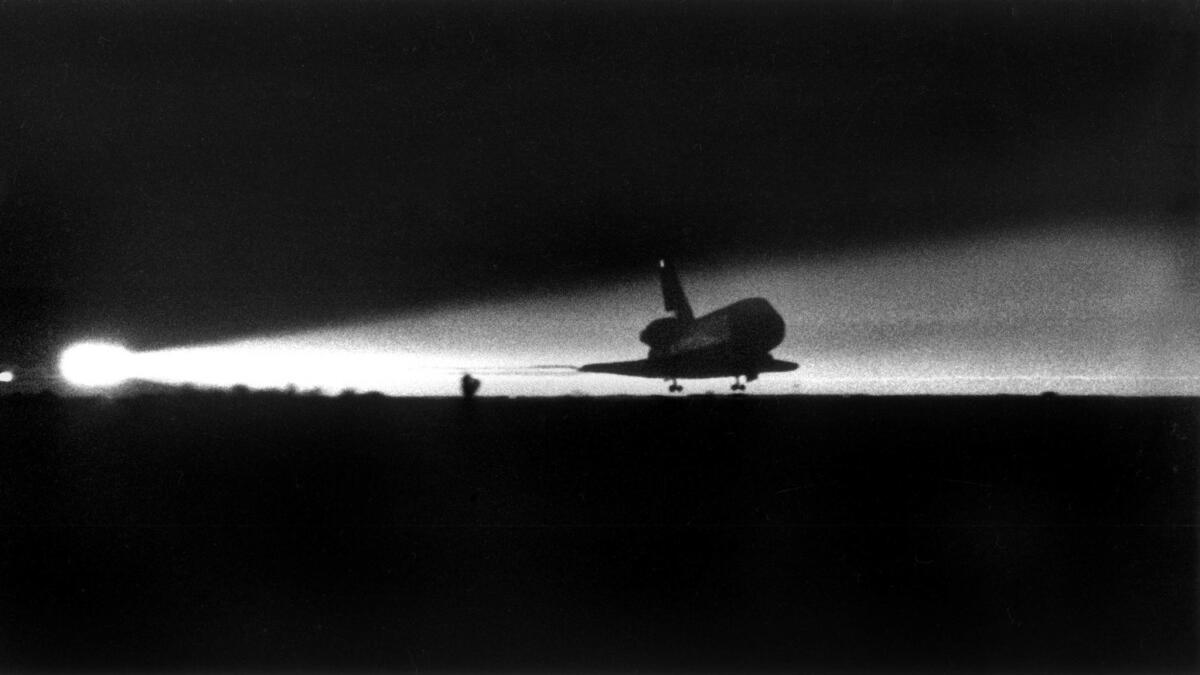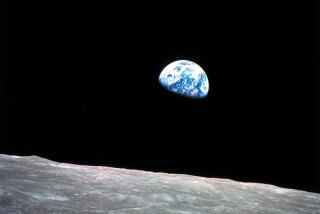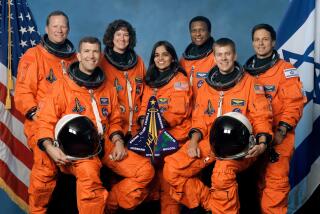From the Archives: Predawn landing for space shuttle Columbia

- Share via
On Jan. 18, 1986, the shuttle Columbia landed at Edwards Air Force Base in the Mojave Desert after a Florida touchdown was canceled because of rain.
This flight by Columbia carried then-Rep. Bill Nelson (D-Fla.), chairman of the House subcommittee that oversees NASA, into space.
During his career, Los Angeles Times staff photographer George Fry covered several shuttle landings at Edwards Air Force Base. According to Fry, photographers had to be in position early because, “NASA made sure nothing moved for a couple hours so no dust was kicked up.”
Fry usually took three Nikon 35mm cameras, lenses up to and over 600mm, and heavy tripods. “You never knew what to expect,” he said.
At night, Tri-X film would have to be pushed to 1600 or even 3200 ASA. To add a layer of insurance, Fry came up with a unique plan.
For the night landing, Fry said, NASA was using a small passenger jet to simulate the shuttle approach. The jet came close to the runway but didn’t actually touch down. Fry exposed a test roll of Tri-X of the practice approach and placed it in the messenger film bag.
After Columbia did land, the test roll was sent back to the newspaper along with the film of the Columbia landing.
Fry said he wrote on the Columbia film bag “DON”T EVEN TOUCH THIS TILL TEST ROLL OUT AND DRIED!”
Back at The Times, lab techs developed the test roll, determined that the exposure was fine, then developed the film.
On Feb. 1, 2003, Columbia disintegrated over Texas during reentry, killing the seven crew members.
This post was originally published Aug. 31, 2010.
See more from the Los Angeles Times archives here
More to Read
Sign up for Essential California
The most important California stories and recommendations in your inbox every morning.
You may occasionally receive promotional content from the Los Angeles Times.










